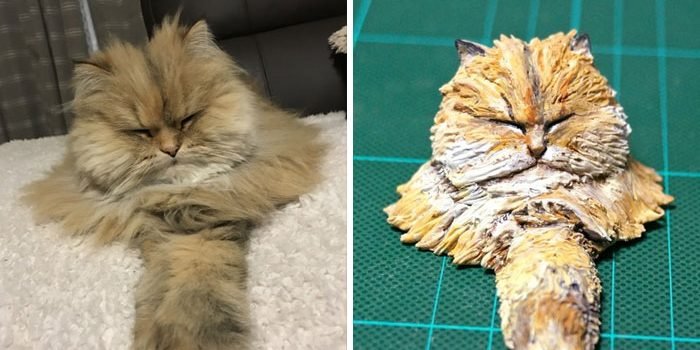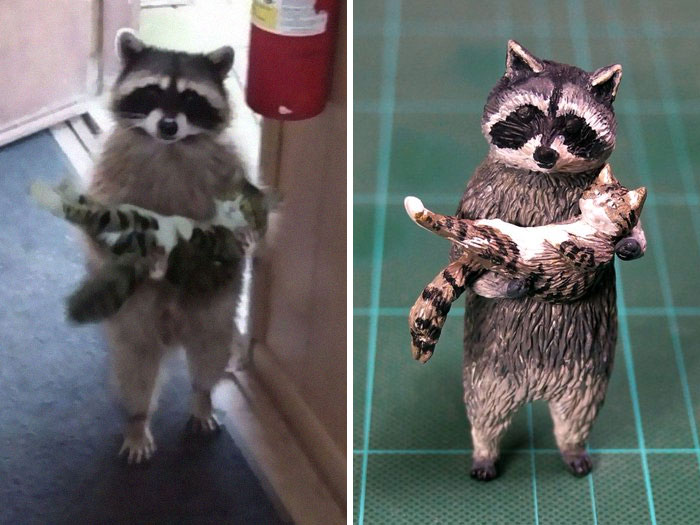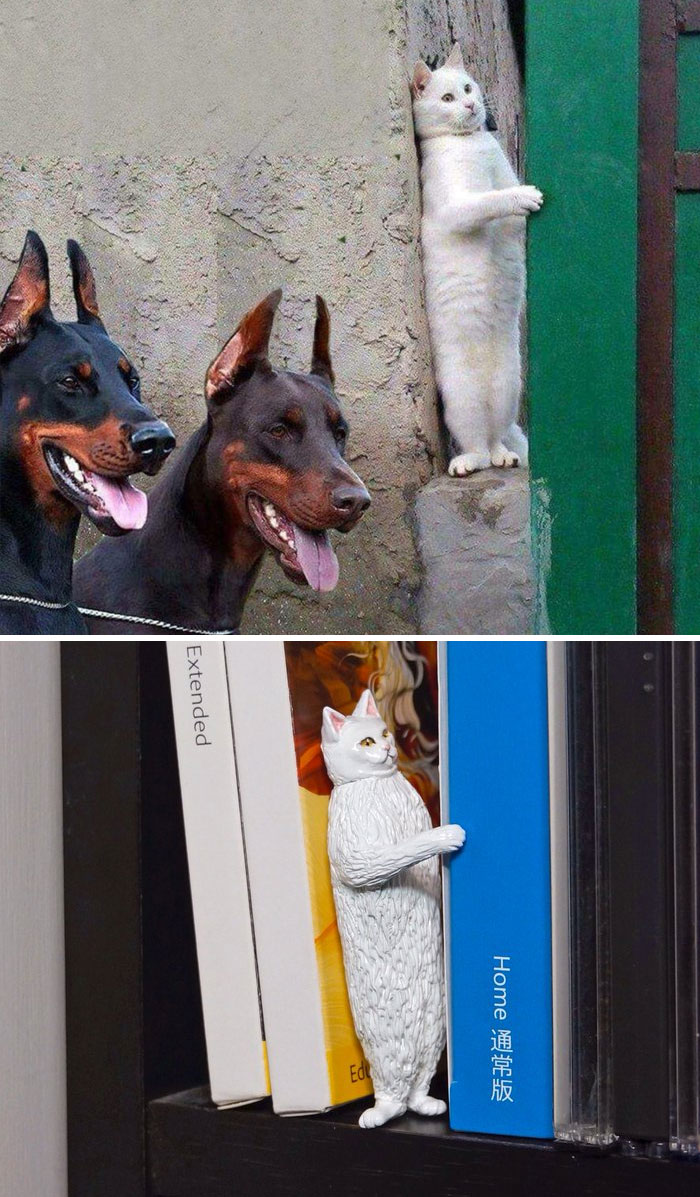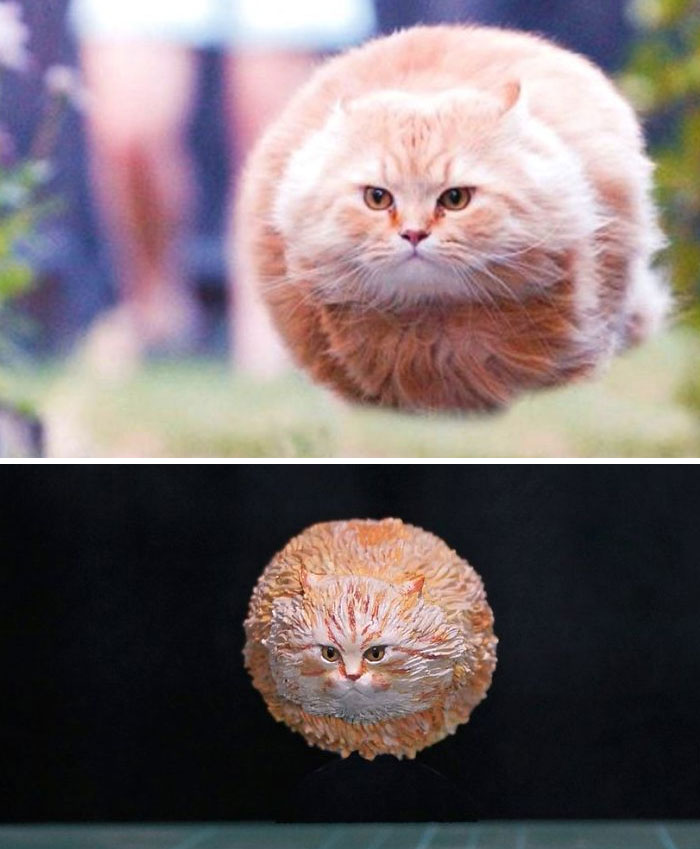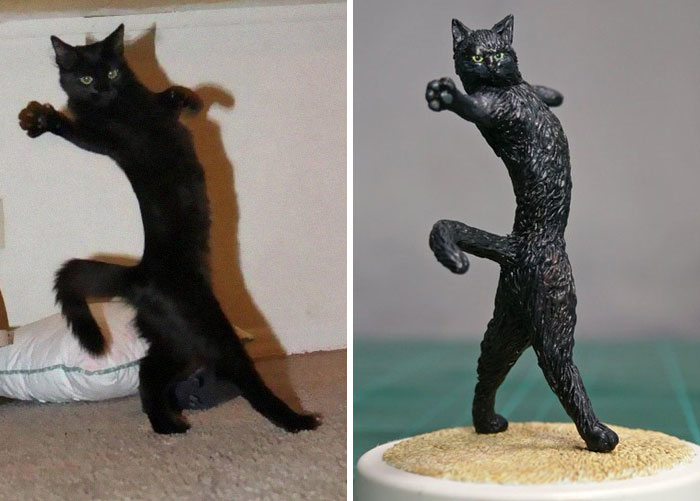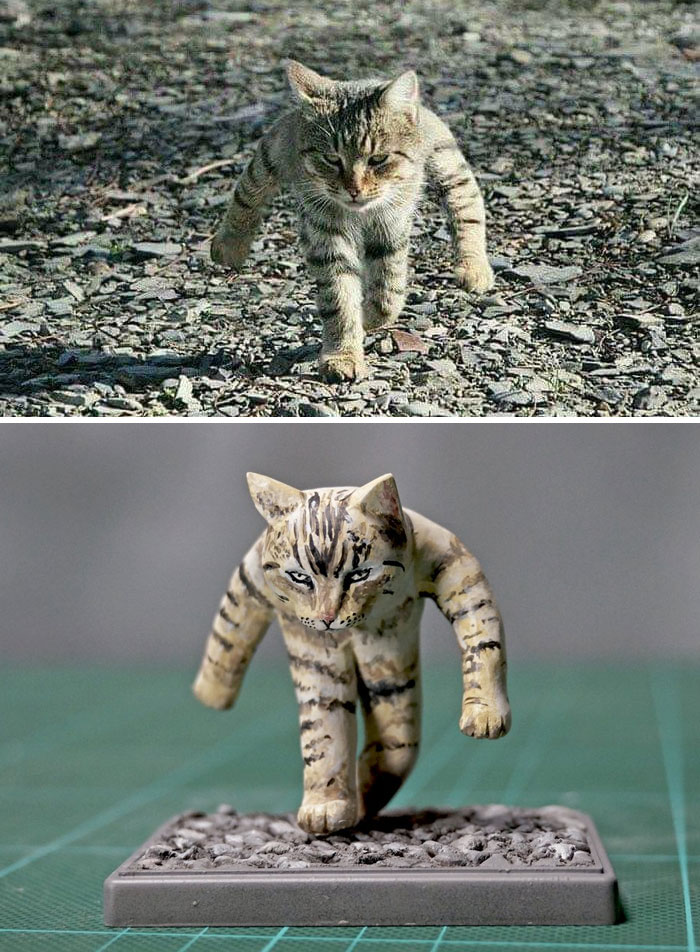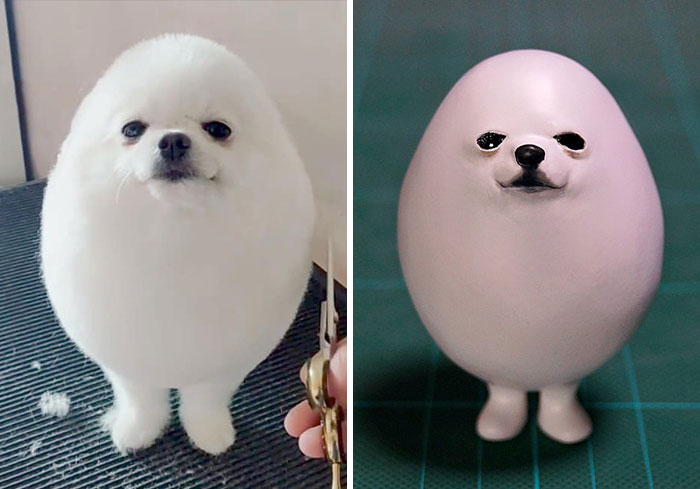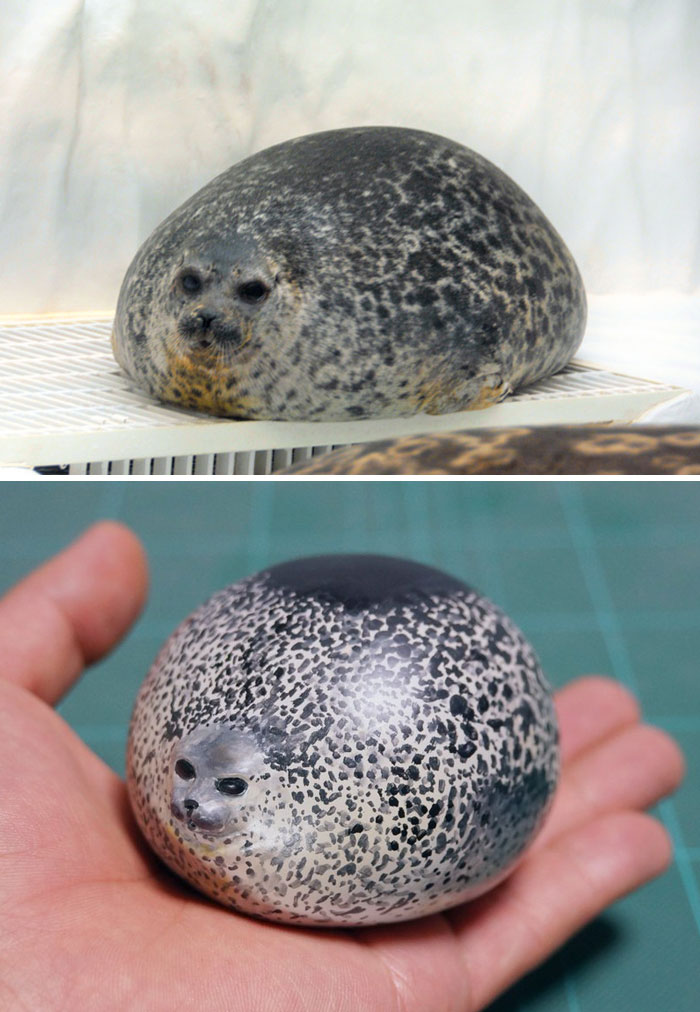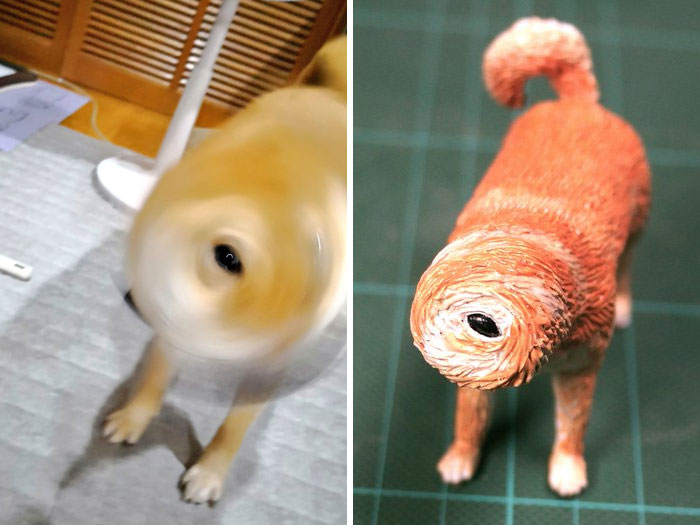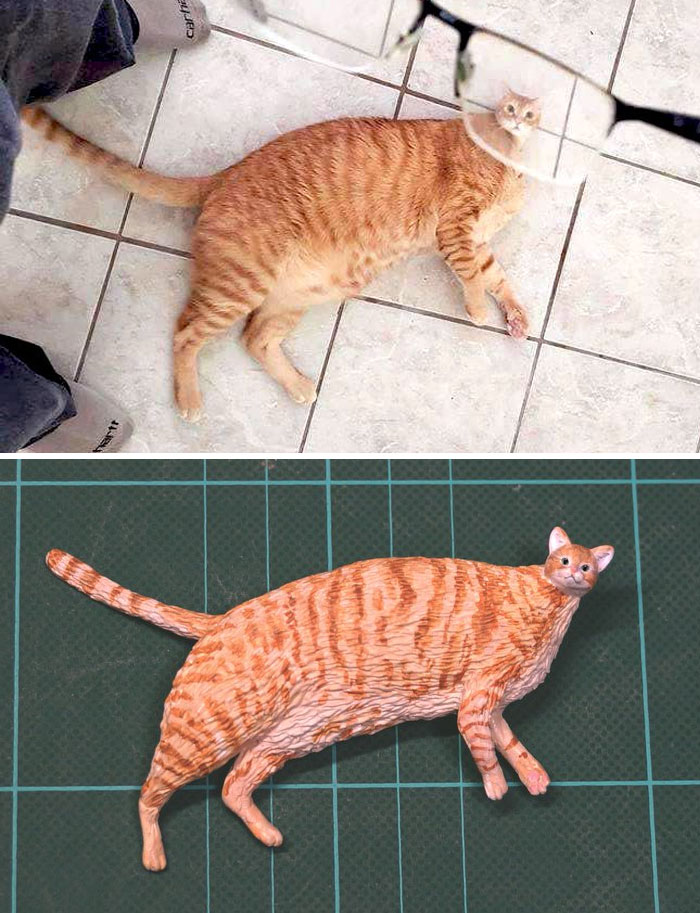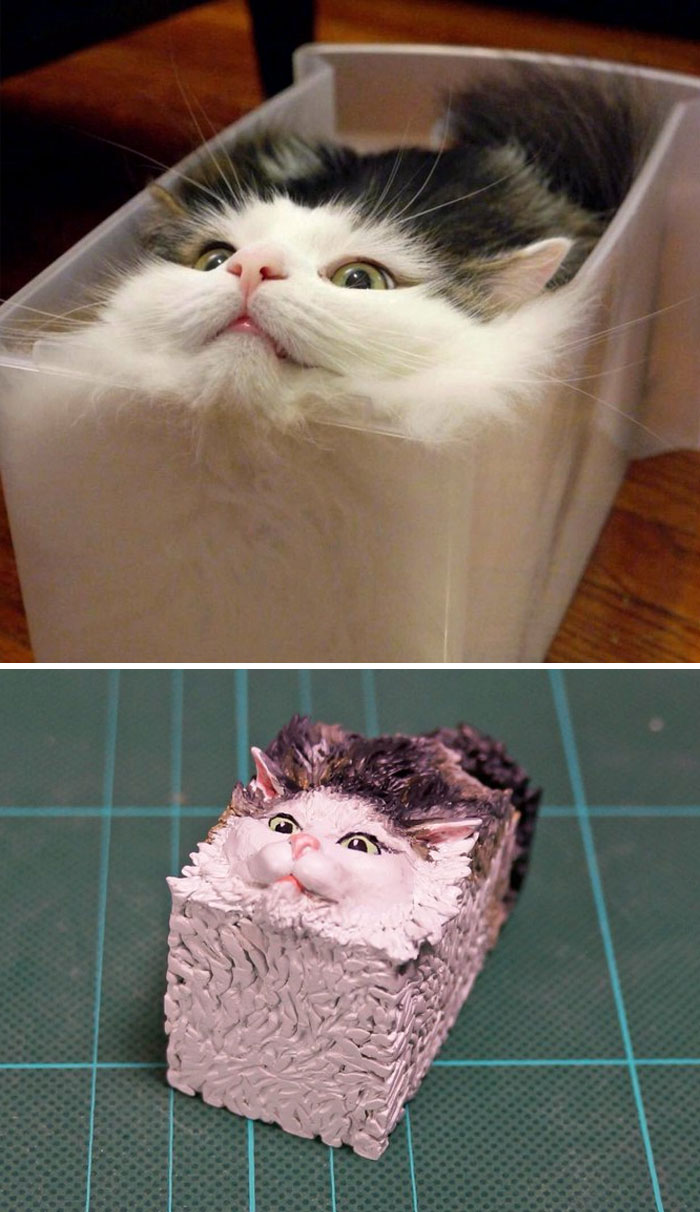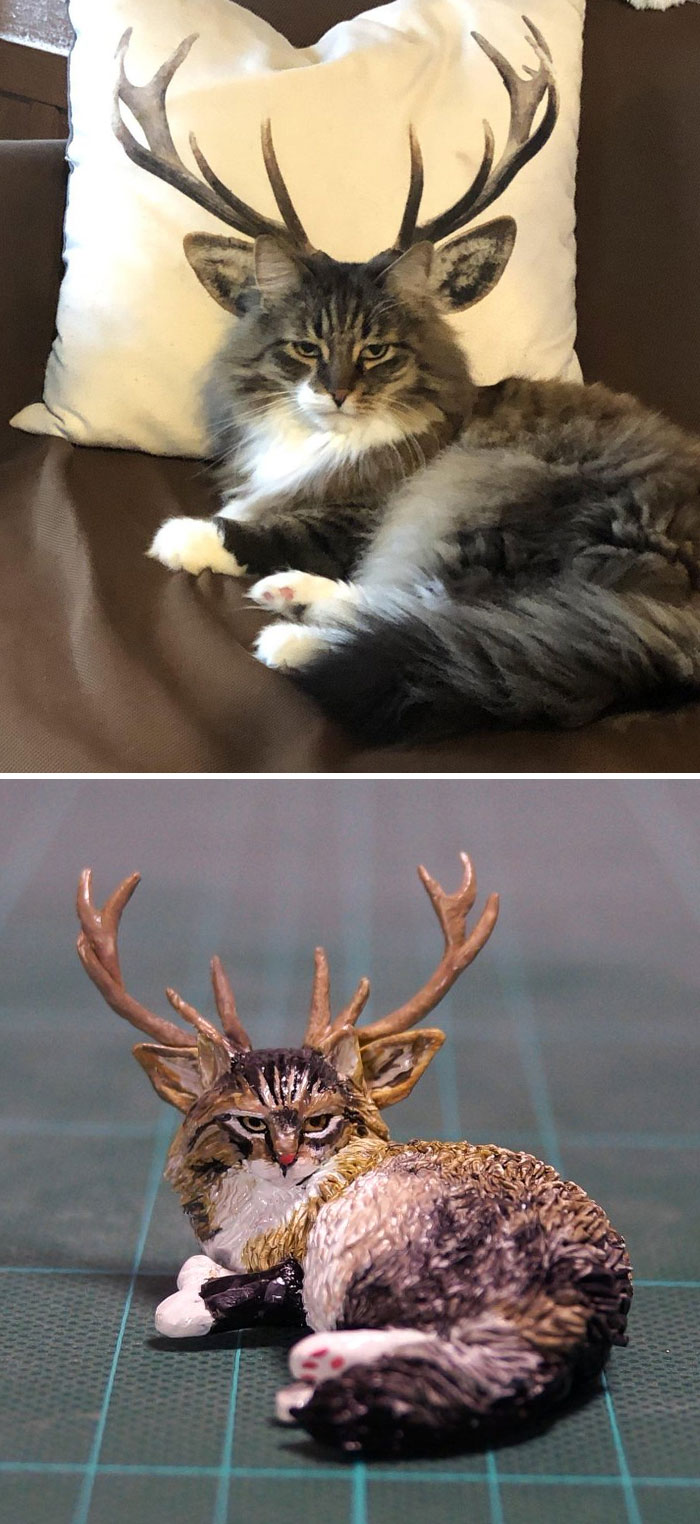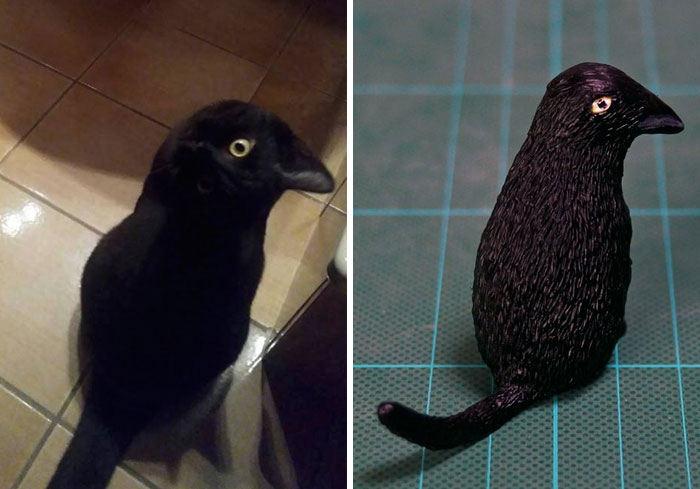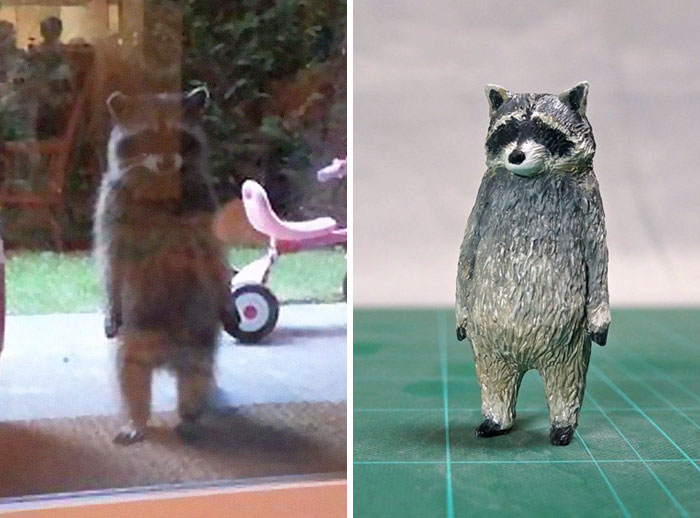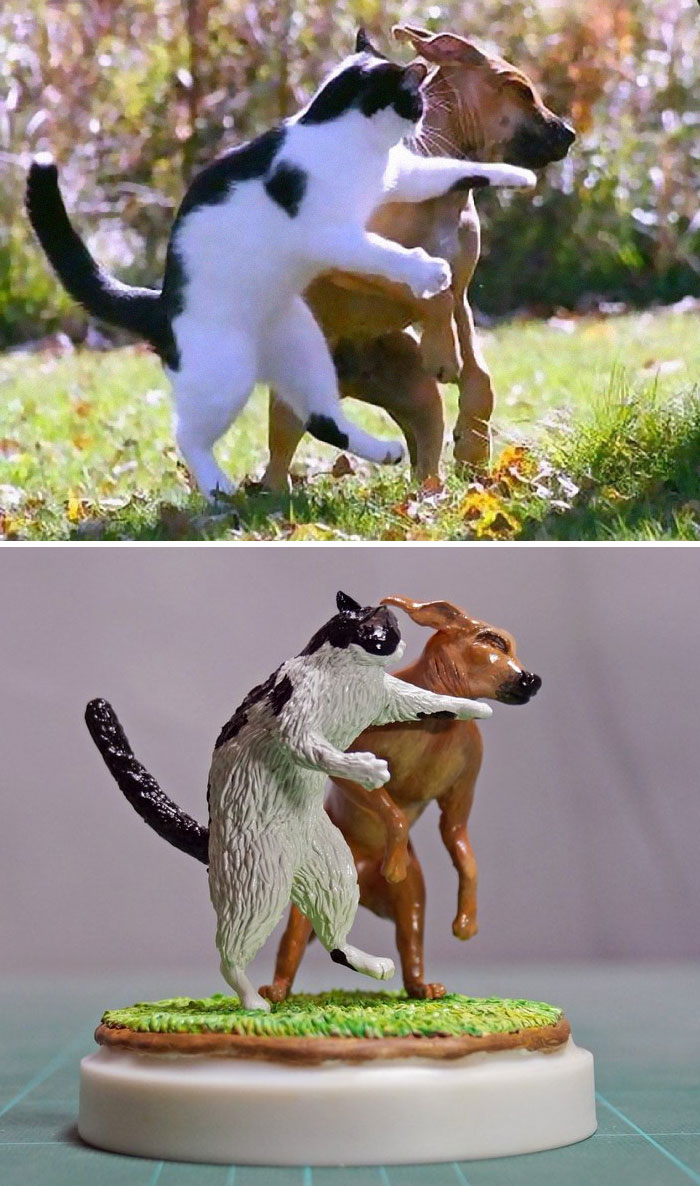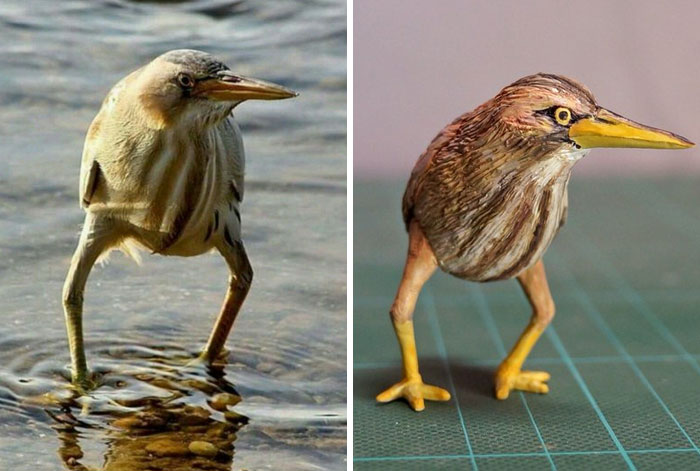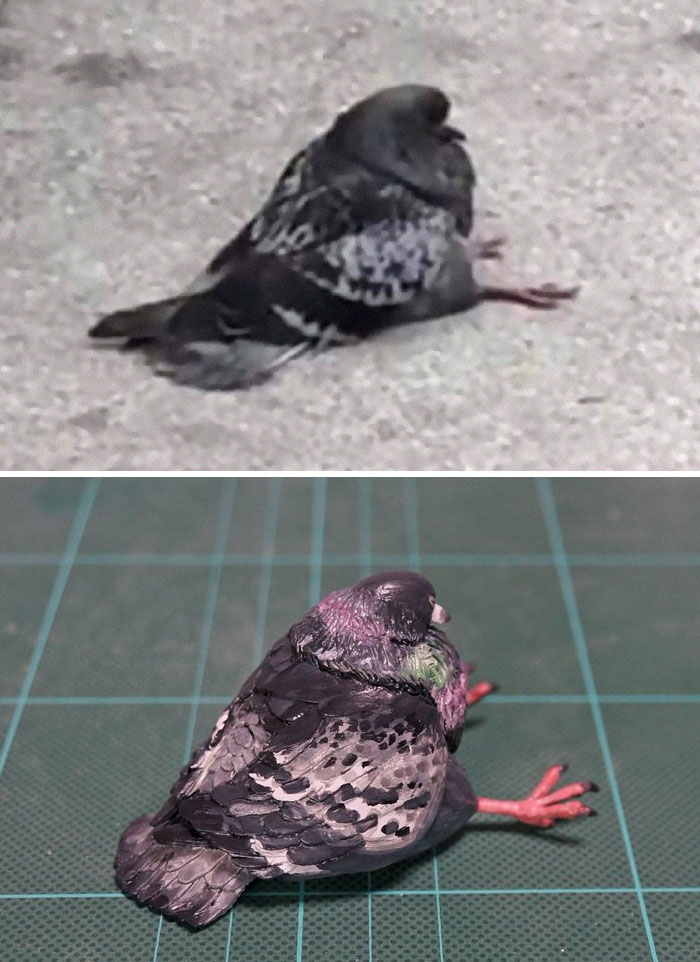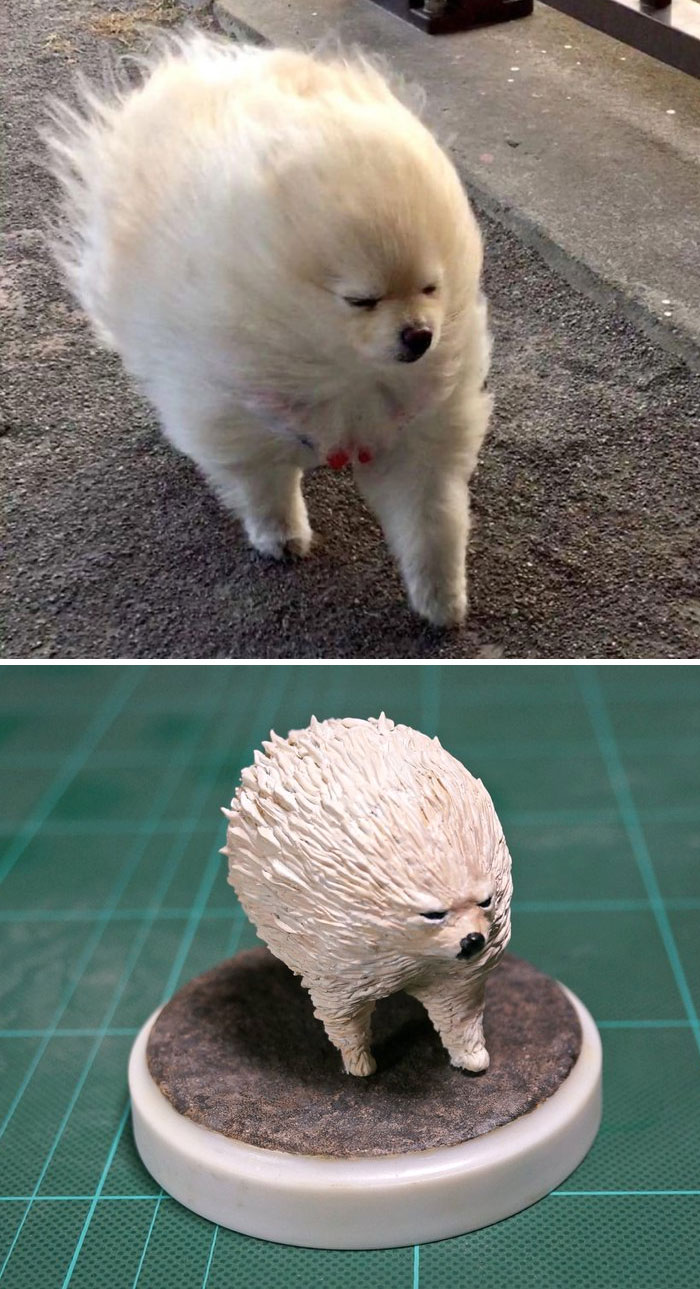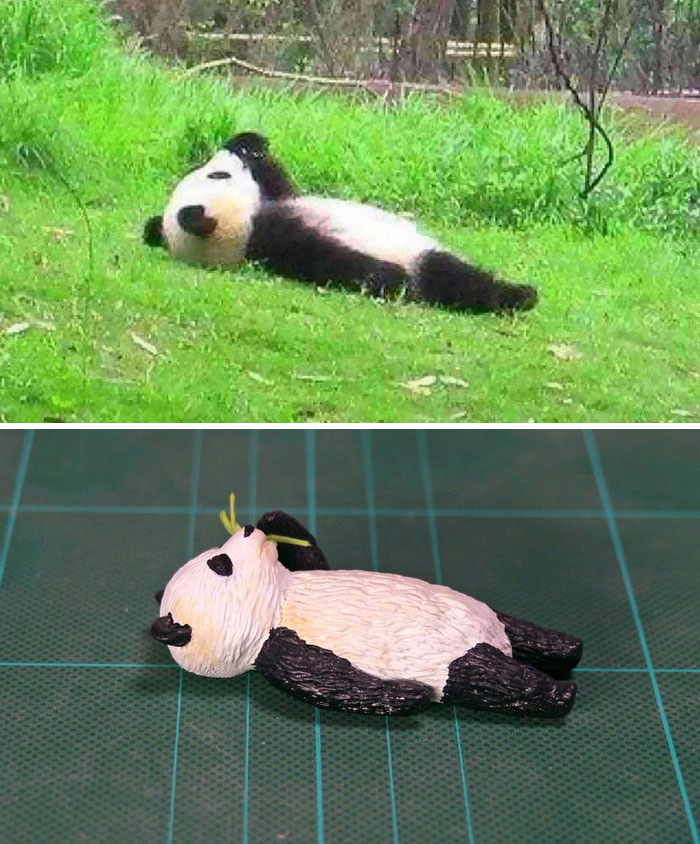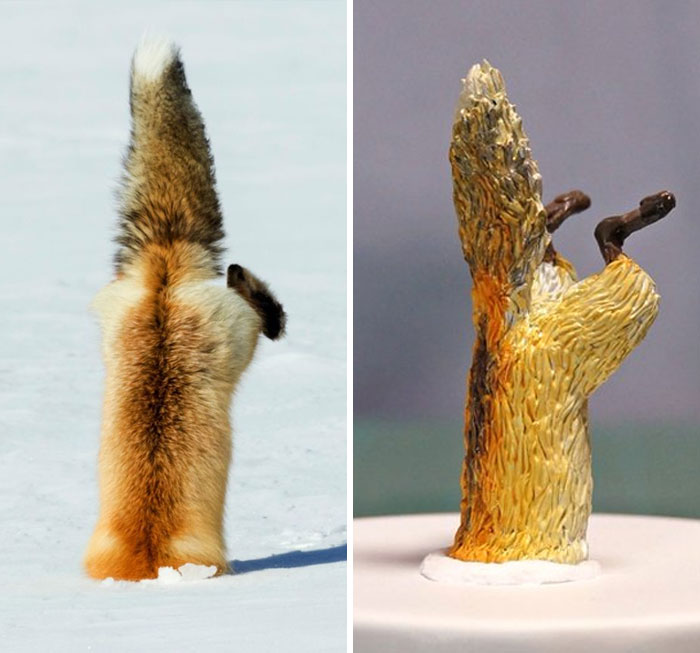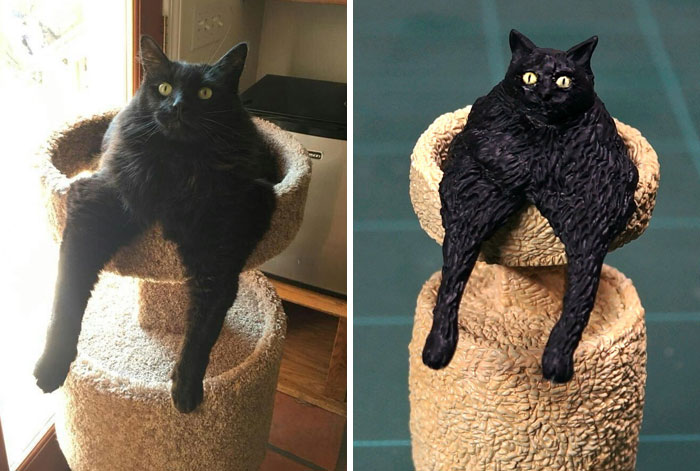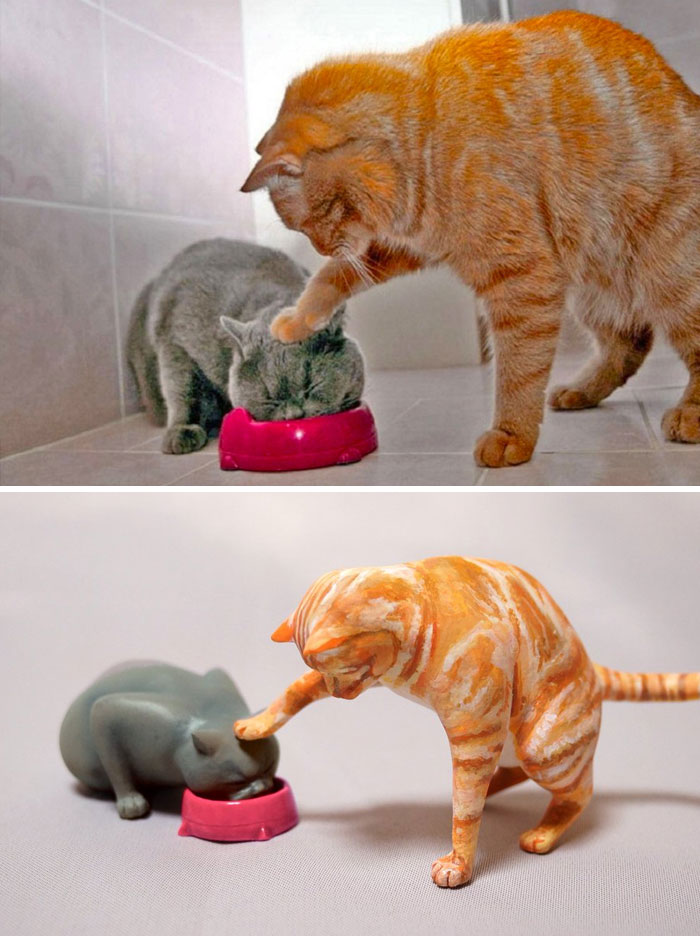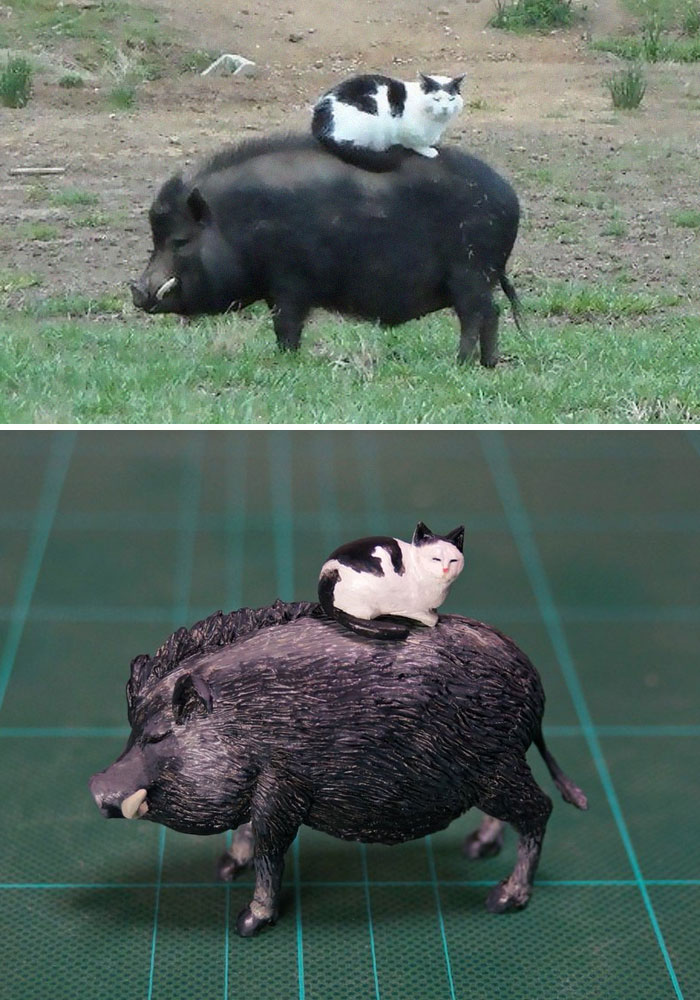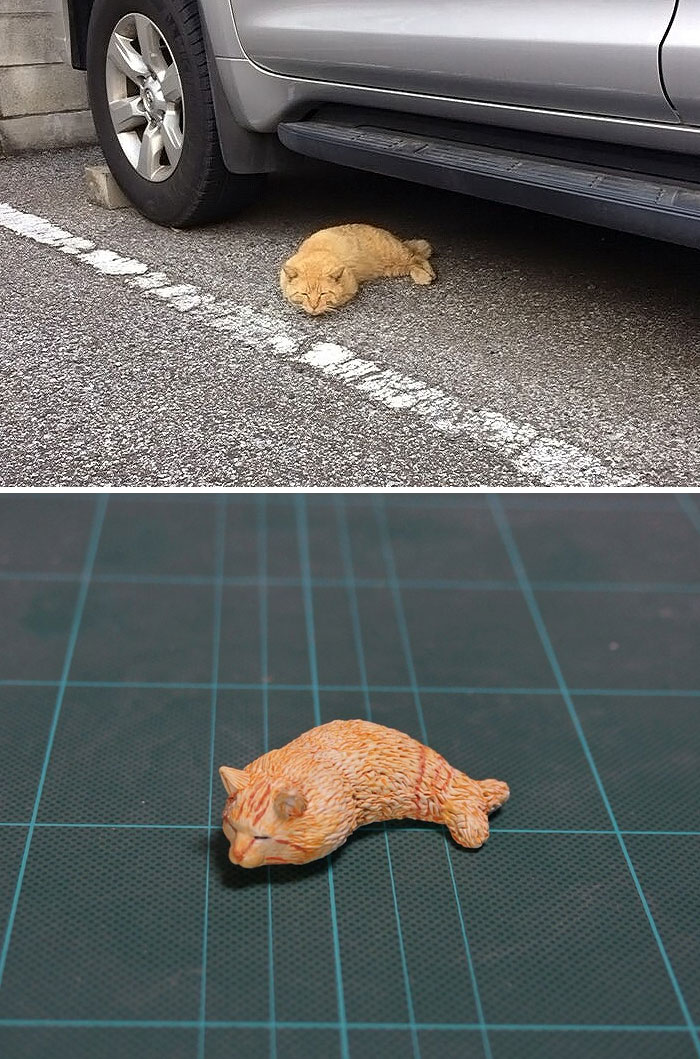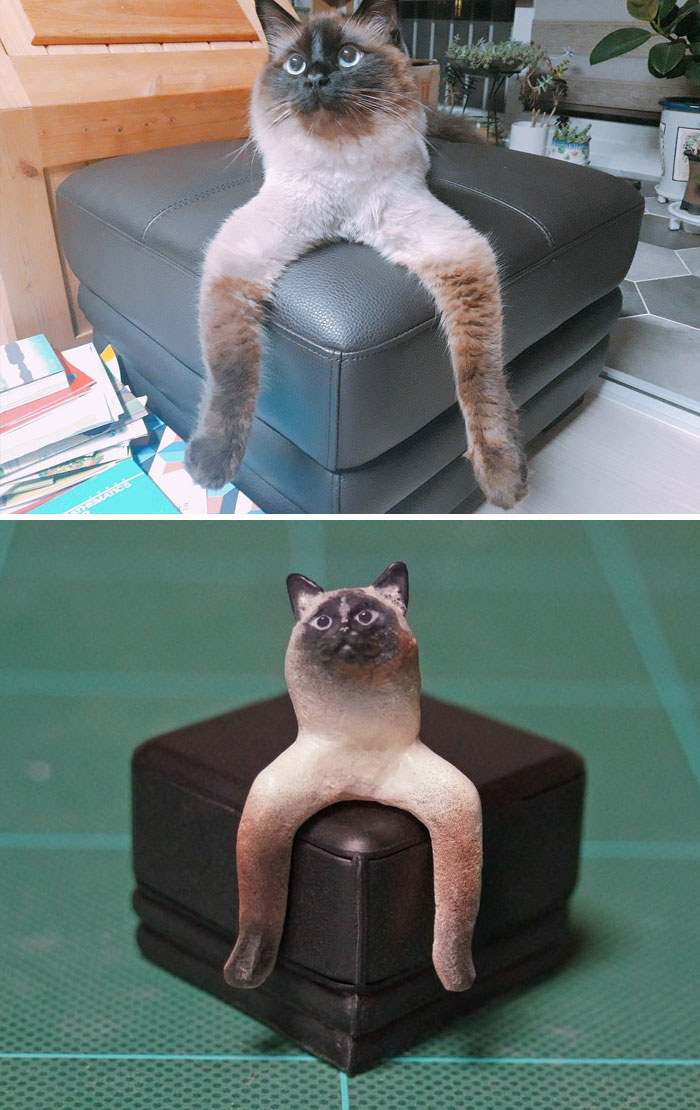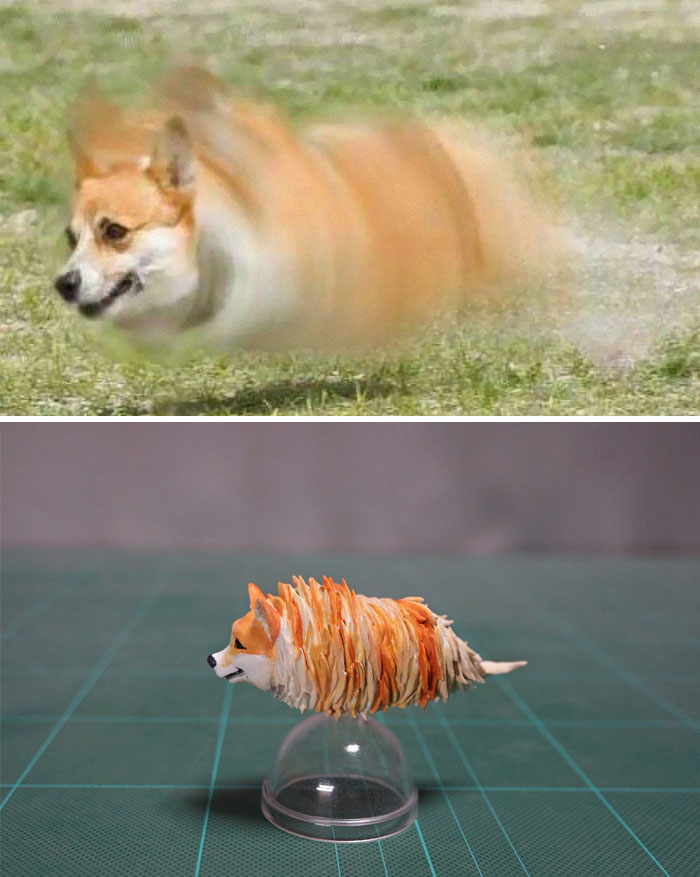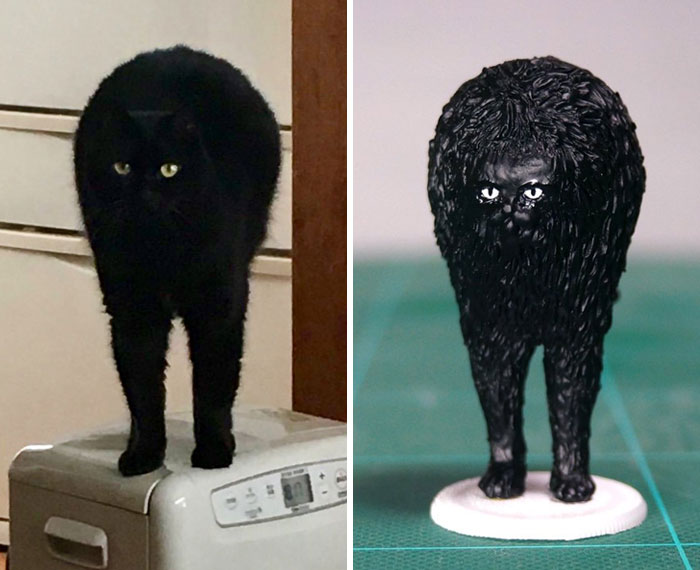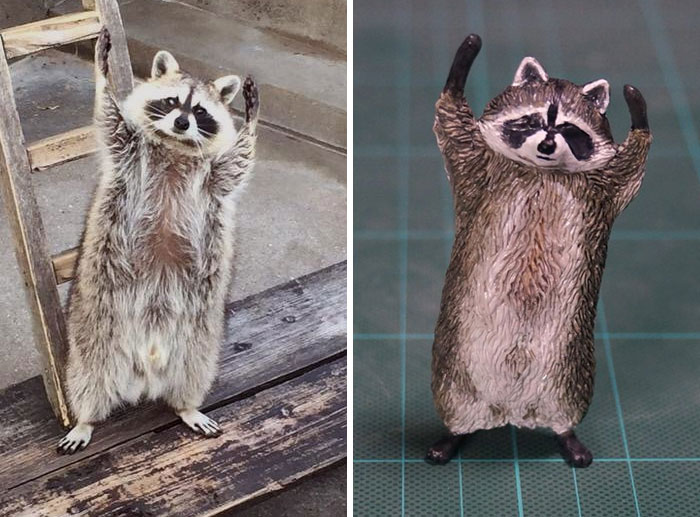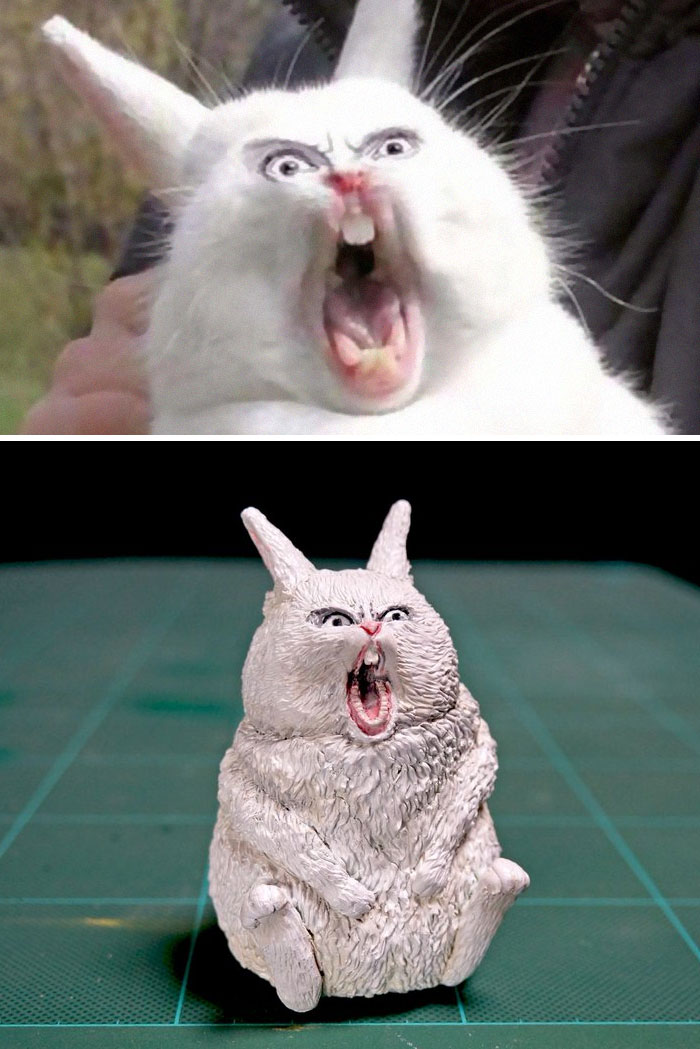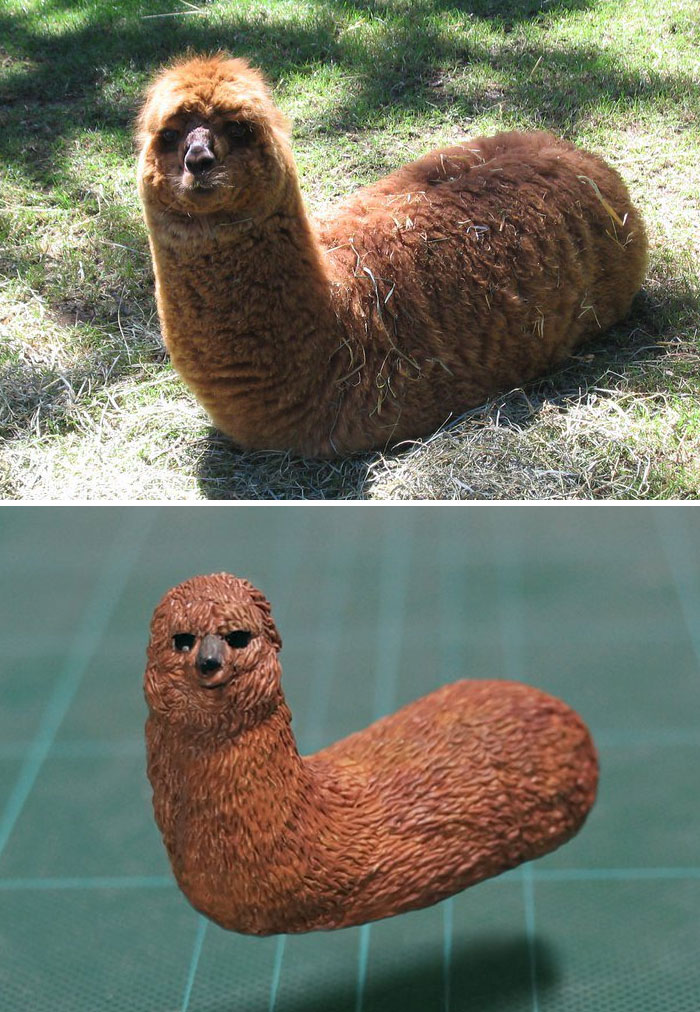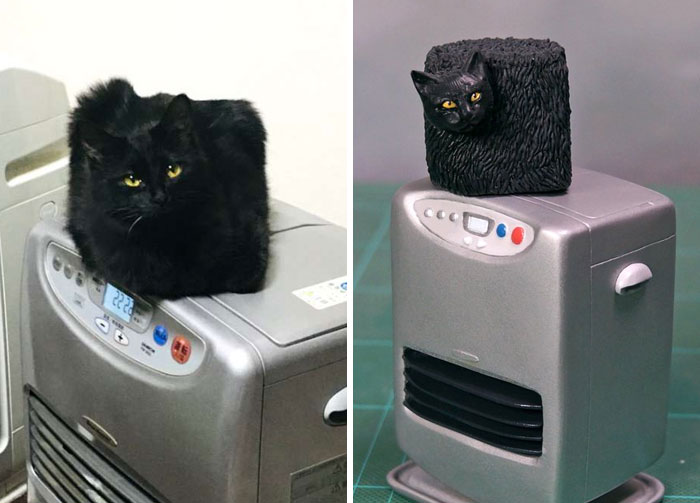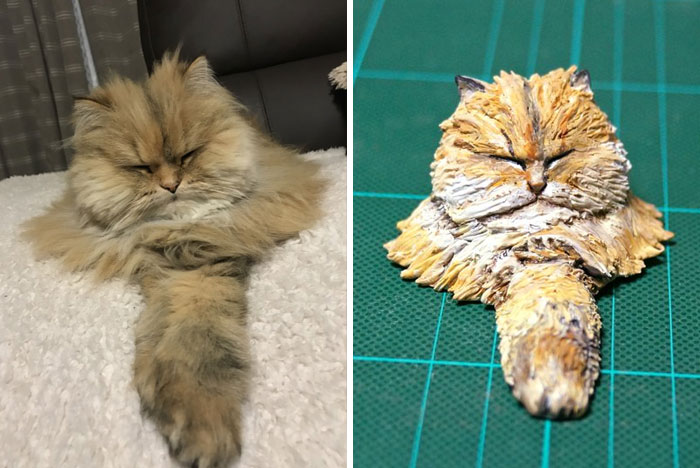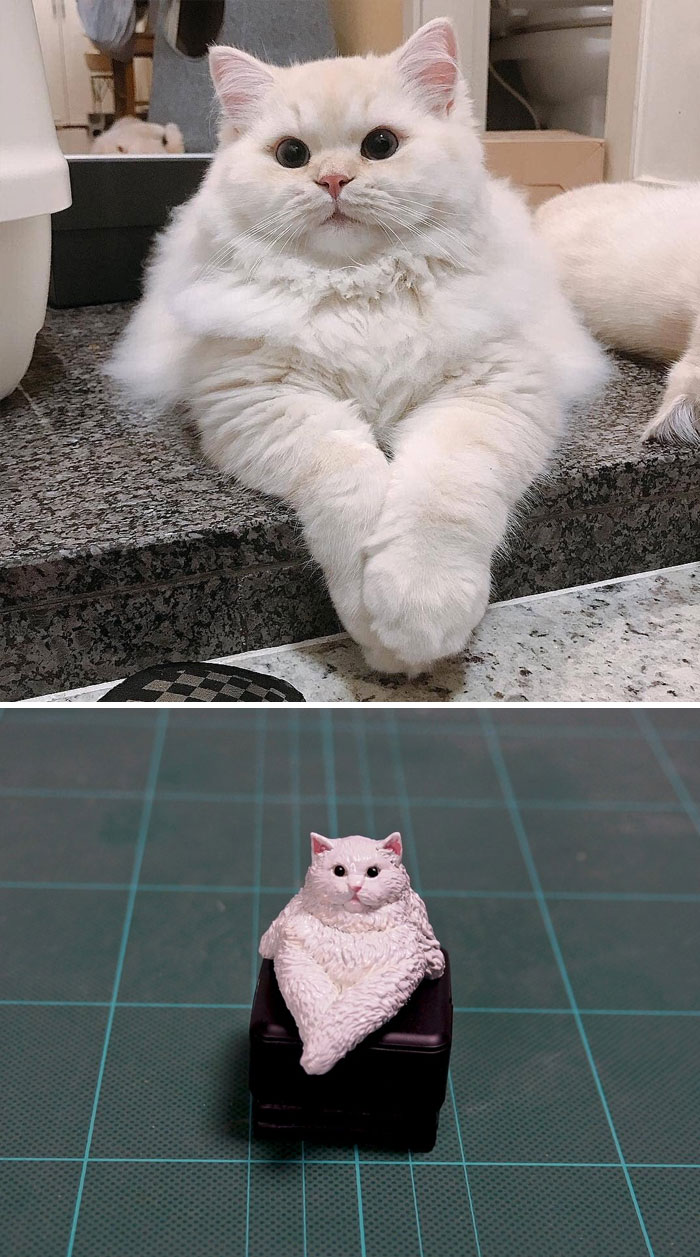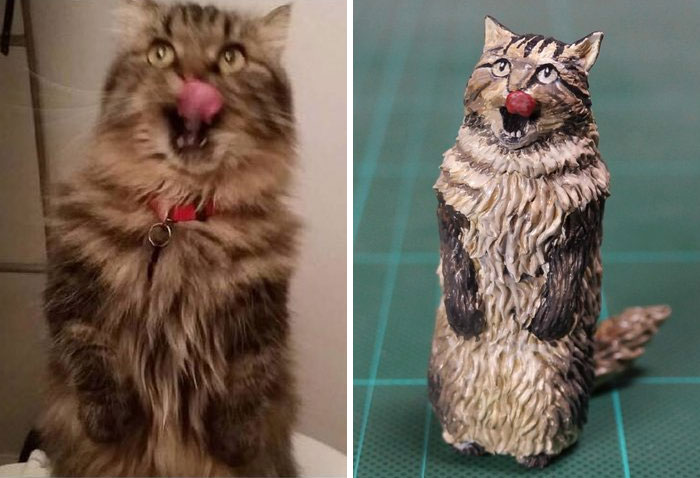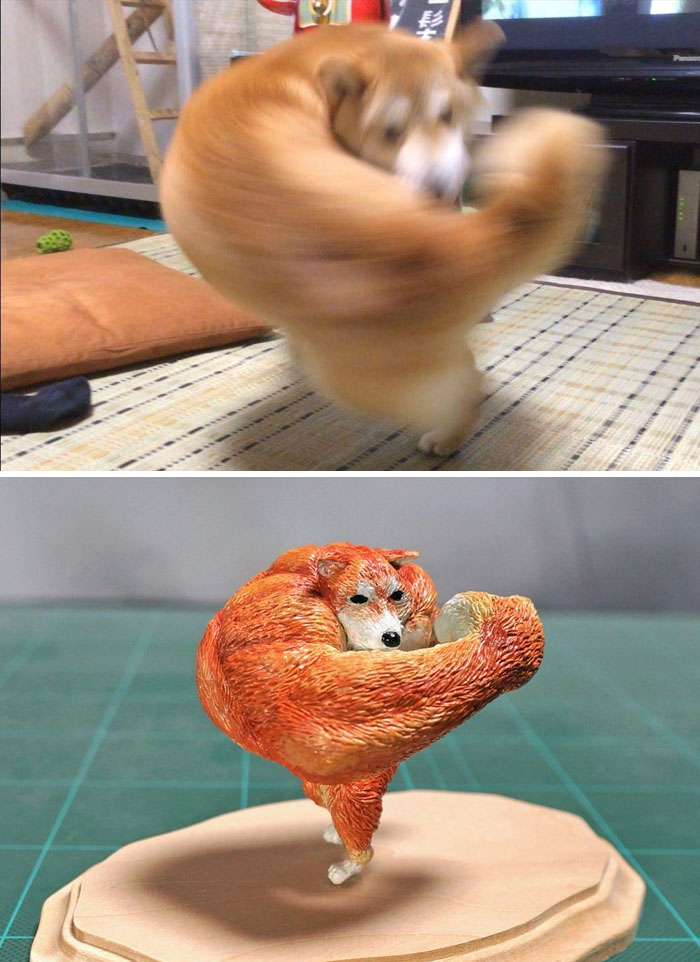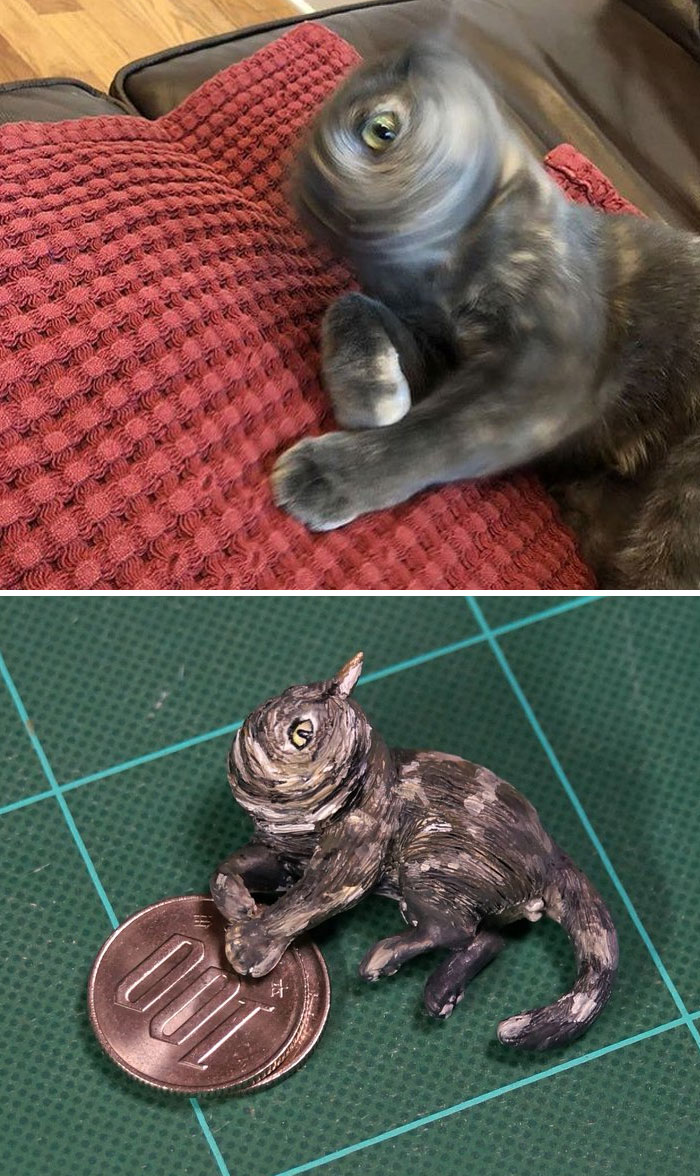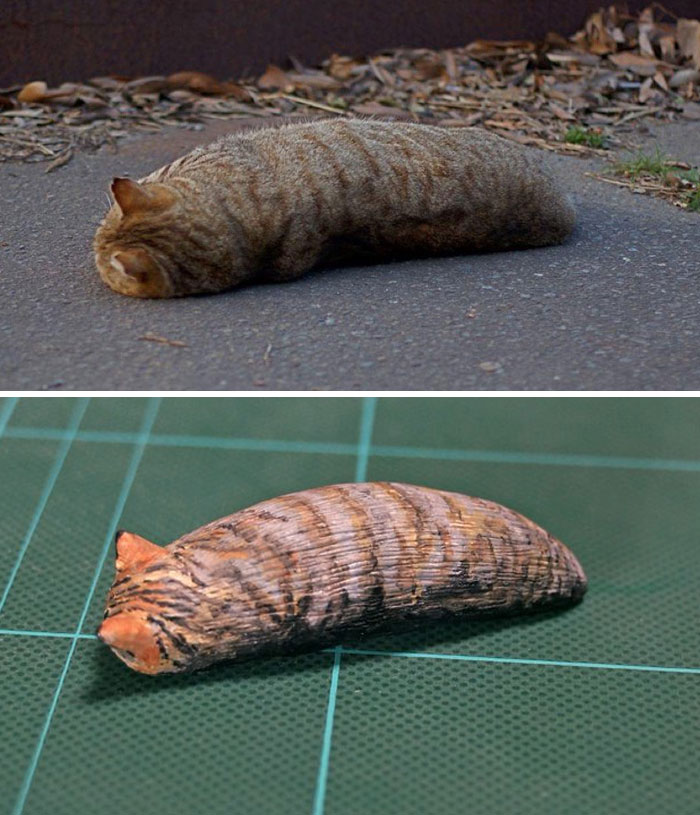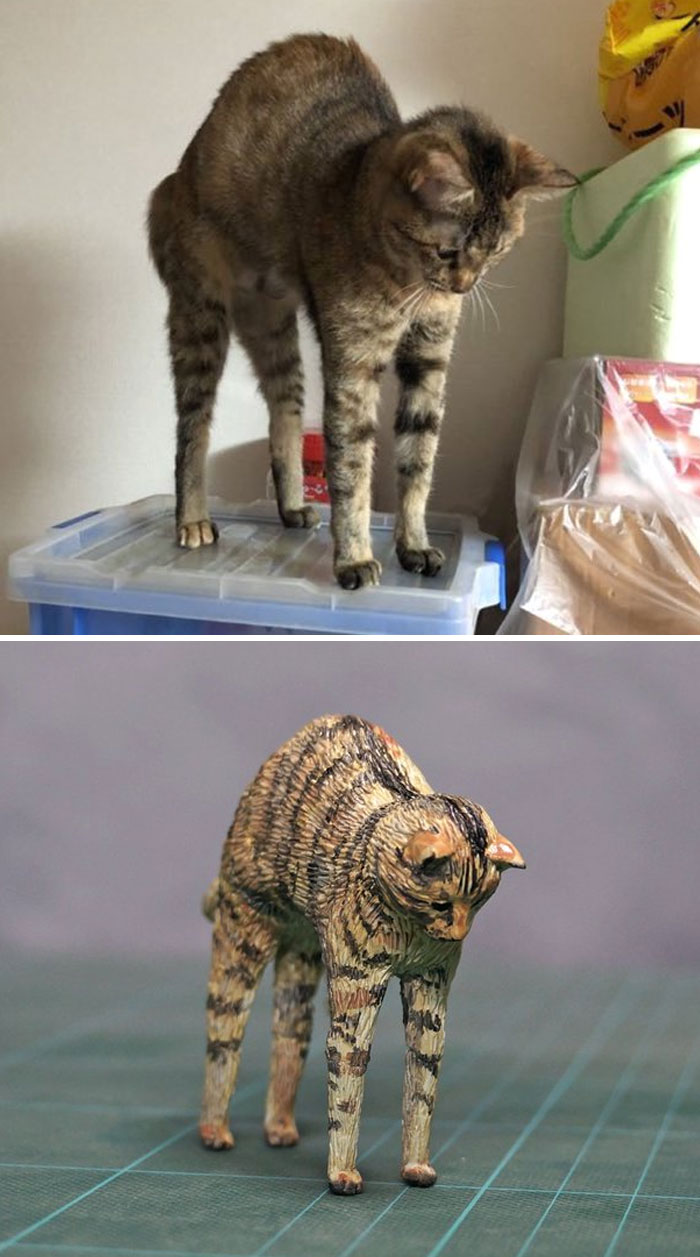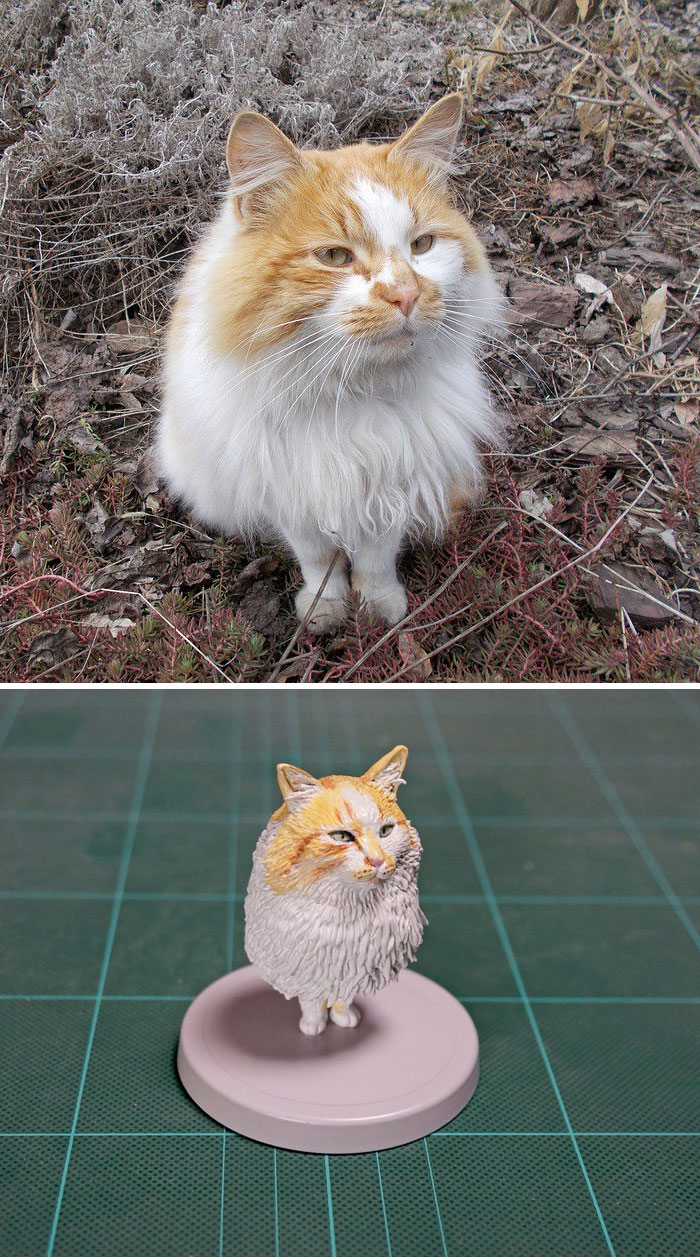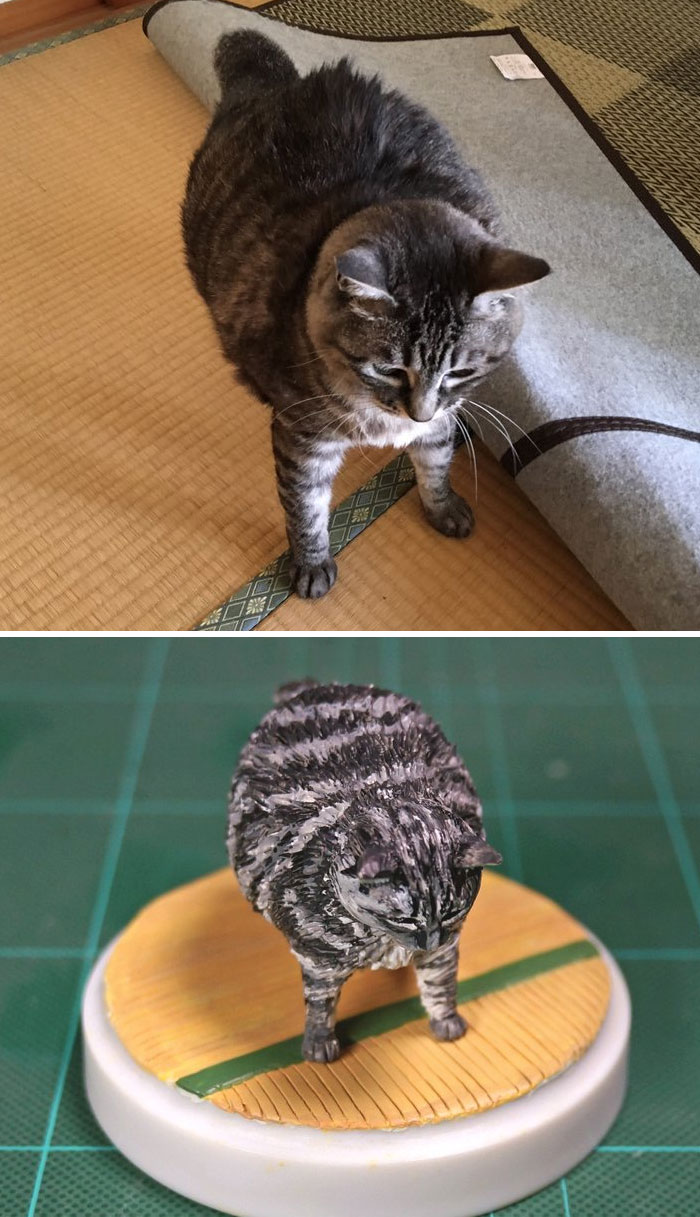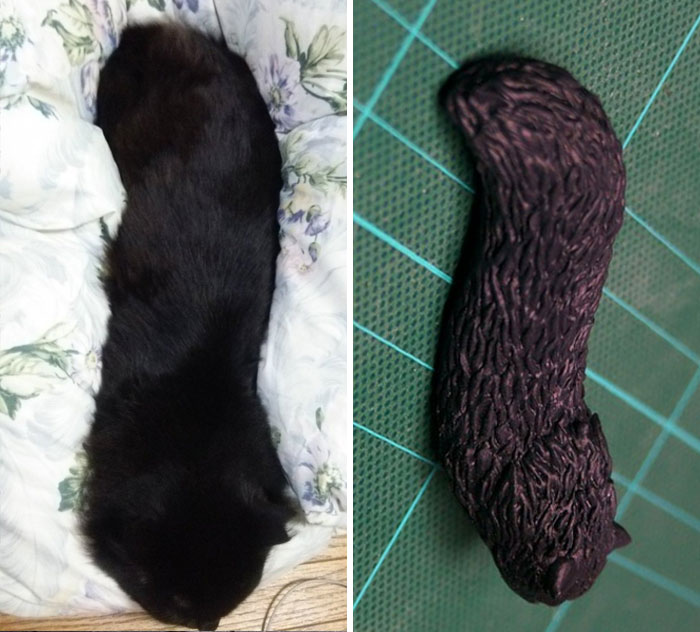Japanese artist Meetissai is a sculptor who get her motivations from viral internet moments to make tiny figurines. This creative and hilarious series began when Meetissai was searching for a ‘real-life’ version of her favorite memes but couldn’t find one. But like how one thing lead to another, she decided to create them with her own hands. As a result, the project has gone so popular that there are now a whole collection of animal memes immortalized forever in 3D form!
Do you know where the concept of memes originally came from? This popular form of communication actually has its roots in academia, and the term was coined by evolutionary biologist Richard Dawkins in his famous 1976 book, The Selfish Gene. His original idea of a meme was “a unit of cultural transmission or imitation,” with examples including the concept of God, nursery rhymes and jokes, catchphrases and fashion trends.
According to The Conversation, the word “comes from the Greek “mimema”, meaning imitated, which Dawkins supposedly shortened to rhyme with gene; a nod to the similarities between the survival of certain memes through the evolution of culture, and the survival of certain genes through the process of natural selection.”
Today’s internet memes are units of popular culture that are shared, copied and modified by people. Memes go far beyond the original image itself, but are whole subspecies of items that evolved from the founding idea.
“The first meme on the internet was actually the sideways “smiley,” created in 1982 by American computer scientist Scott E. Fahlman,” The Conversation writes. “The practice of using punctuation markers to show emotion was quickly picked up by internet users all over the world, and several other expressions, such as :-( and ;-), were added to the repertoire of the “emoticon” meme.”
“In 1998, when the web was enjoying more mainstream use, the Hampster Dance meme – depicting rows of dancing hamster GIFs, on the website of Canadian art student Deidre Lacarte – became popular. By the end of June 1999, the site had been visited 17m times. It later spawned a catchy song by the Cuban Boys and a viral remix by Hampton the Hamster, as well as several copycat sites. This meme, as simple as it may be, is one of the first examples of viral digital content.”
Later on, things like LOLCats, Grumpy Cat and the Shiba Inu meme became part of internet culture, and even affected the way we speak to each other. Memes inevitably began to be used by people to promote certain political ideas or ideologies. “Pepe the Frog, for example, was appropriated from the comic series Boy’s Club by the alt-Right, ultimately becoming a racist symbol before being killed off by his creator Matt Furie.”
Like nature itself memes continue to evolve, giving us new and creative means of communication, especially for those people ‘in the know.’ It is no surprise that animals, particularly cats feature heavily, they have long been a part of culture and communication, from ancient Egypt to Garfield. While some things change, others remain the same and where there are jokes and pictures to share, there will be cats!


